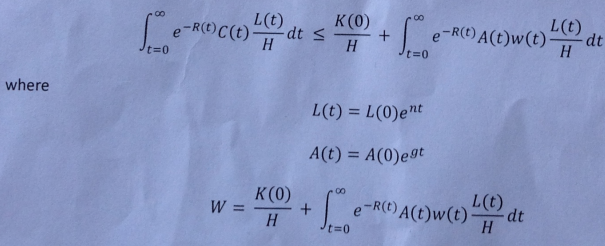1. Using the traditional Keynesian model, explain how contractionary monetary policy would affect equilibrium aggregate output and the price level.
2. Using the Wow/ MRW model, explain why- if all countries have the same saving rates, the same depreciation rate, the same labor force growth rate and the same rate of technological progress- we would expect countries with lower levels of output per worker to have faster growth rates of output per worker in the short run.
3. Explain graphically and verbally how, if at all, each of the following developments affects the break- even and actual investment lines in the basic diagram for the Solow model:
(a) The rate of depreciation falls.
(b) The rate of technological progress rises.
(c) The production function is Cobb - Douglassf(k) = ft*, and capital's share, a, rises.
(d) Workers exert more effort, so that output per unit of effective labor for a given value of capital per unit of effective labor is higher than before.
4. Using the Ramsey model, assume that the instantaneous utility function u(C(t)) in the household 's utility function

Consider the problem of a household utility maximization, with respect to C(t), and subjected to a household's budget constraint.

Find an expression for C(t) as a function of initial wealth plus the present value of labor income the path of r(t), and the parameters of the utility function.